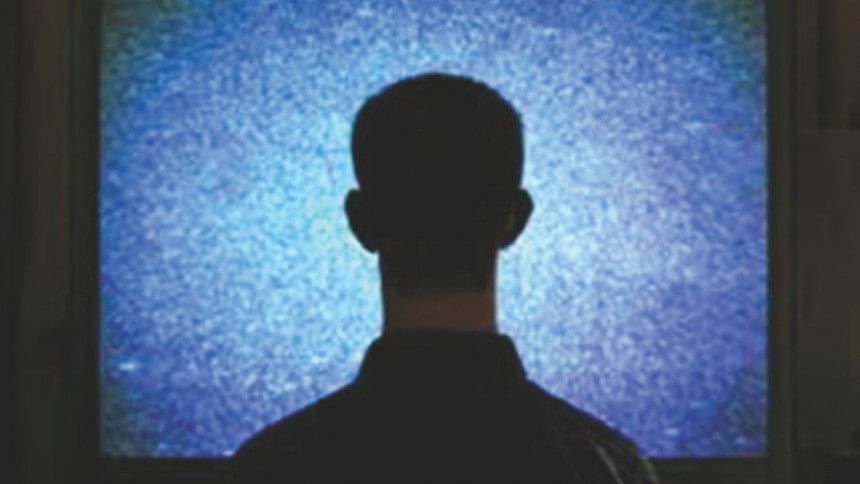The Fog of War

2005: the War on Terror was in its third year. Hundreds of tonnes of explosives had pummeled Iraq and Afghanistan, and thousands more were in the pipeline. The war machine was flexing hard. TV screens and newspaper headlines were awash with violent and gory images, accompanied by stories of dubious advances and niche victories. With every passing day, the pseudo-theory of clash of civilisations seemed more and more probable.
However, as the shelling grew heavier, the premises of the wars seemed flimsier. The much-hyped 'last stronghold of Al Qaeda' and 'impregnable cave fortress' of Tora Bora, Afghanistan – shelled and bombed to dust – had turned out to consist of some small, natural caves. Western media had widely reported that Tora Bora housed hydroelectric power plants, armouries, hotels and intricate tunnels among other things. Many newspapers had even published detailed layouts. But once captured, the site revealed only small caves supported by wooden beams and some boxes of ammunitions.
Stories coming out of Iraq were even more bizarre. Saddam's supposed 'Weapon of Mass Destruction' (WMD) was looking like pretext for a unilateral invasion. The Chilcot Report (2006) revealed the quality of intel used to prop up the WMD theory. MI6's prime informant had reported that chemical weapons and nerve agents were being produced and loaded into 'linked hollow glass spheres'. However, investigators soon realised that this unidentified 'informant' may have taken inspiration from the 1996 action movie The Rock, starring Nicholas Cage and Sean Connery. Sadly, the cinematic depiction was inaccurate, since such containers were not used for chemical munitions.
With the disastrous debaathification, immense loss of civilian lives and a legacy of inhumane abuse and torture at Abu Ghraib, it is no surprise that public opinion began to quickly change in the USA, less than five years after the 9/11 attacks. By 2005-06, Americans who thought the Iraq War was justified – dropped from nearly 75 percent to 47 percent (PEW research). The administration needed to better make their case, better rally citizens in favour of the wars.
In 2005, President Bush Jr. went to the length of making messianic claims, to rationalise the extravagant wars. He explained, "God would tell me, 'George go and fight these terrorists in Afghanistan'. And I did. And then God would tell me 'George, go and end the tyranny in Iraq'. And I did." (Guardian, October 07, 2005). During this time the Pentagon decided that they needed human intervention; they decided to produce 'fake terrorist videos', to keep the threat, the fear and the fight alive.
British non-profit watchdog The Bureau of Investigative Journalism (TBIJ) recently broke the story: British PR firm Bell Pottinger was paid nearly USD 650 million to produce "short TV segments made in the style of Arabic news networks and fake insurgent videos." Former Bell Pottinger video-editor Martin Wells spoke of producing white (attributed), grey (unattributed) and black (misattributed) media contents.
For example, Wells says that his team would be sent to collect low-resolution, amateur footage of bombings, which they would then edit into an Arabic-news like segment. After being dubbed in Arabic, the video segments would be sent to TV stations for circulation. If we consider how common it has become for Western media outlets to use footage from Middle Eastern channels and streaming sites, there is no assurance that these commissioned 'news segments' did not end up on CNN or similar news channels. After all, US military involvement with production of these segments would often be kept secret.
Wells also confirmed that they had produced propaganda videos and claimed they had been made by Al Qaeda. It is not clear how, and how wide, these fake videos were circulated. According to Wells, US marines would drop off CDs (with IP-tracking mechanisms) at raided terrorist dens. Then they would track IP addresses. Now, two points can be raised here: firstly, once dropped off, the Pentagon would not have control over the fake videos. Even if a segment surfaced on regional news channels, the Pentagon had no motivation or means to claim authorship.
Secondly, in the same report, Bell Pottinger claims to have spent most funds on production and distribution of media content. It seems unlikely that dropping off CDs could rake up a million-dollar bill. Rather, airing or placement costs seem more likely. And this wouldn't be unprecedented. In 2005, Lincoln Group – another PR firm engaged by the Pentagon – was caught secretly making payments to place propaganda articles in Iraqi newspapers. In that case too, the content-source was concealed. Following a leak, the whole episode resulted in a congressional hearing.
Bell Pottinger's track record of navigating legal and moral grey zones creates a further sense of discomfort. Previously, the firm has represented authoritarian regimes from the UK, Saudi Arabia, Syria, Bahrain, Egypt and Sri Lanka. It has bragged about possessing the capacity to alter online search results, change Wikipedia entries and perform "all sorts of dark arts."
Bell Pottinger chairman Lord Tim Bell once said, "We tell stories – I don't mean lies. We work for people who want to tell their side of the story." But his firm has seemingly taken to telling all sides of the story – to producing a complete political narrative for global consumption.
Now, most of us will agree that communications/propaganda is vital for rallying public opinion during conflicts. Regardless of military might, all armies must be able to communicate their moral stance and rationalise their actions (for example, "to free the people of X", "to take plutocracy to Y", "to reclaim Z's homeland" etc.). And it is not the fence-straddling tactic that warrants reflection. But the magnitude of operations and implication of contents in this particular case should raise some questions: why weren't real Al Qaeda videos used? Who profited by magnifying the threat of Al Qaeda? More importantly, when paid professionals write both sides of the story, where do psy-ops end and socio-political narratives begin?
The writer is a strategy and communications specialist.

 For all latest news, follow The Daily Star's Google News channel.
For all latest news, follow The Daily Star's Google News channel. 






Comments